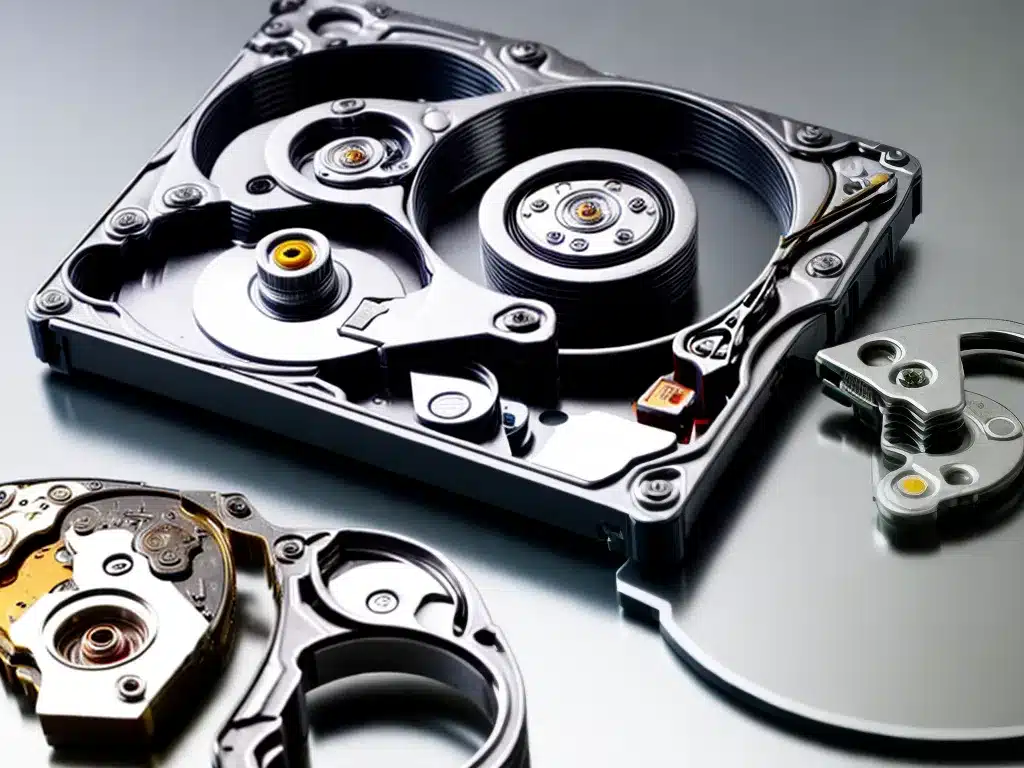
Losing files due to a hard drive failure can be devastating. Important documents, photos, videos, and other irreplaceable data may seem gone forever. However, with the right tools and techniques, recovering lost files from a failed hard drive is often possible.
Assessing The Hard Drive Failure
The first step is to properly assess the type of failure:
Logical Failure
A logical failure is when the file system or partition table on the drive becomes corrupted. The hard drive hardware still functions, but the operating system cannot access the data. Logical failures account for the majority of hard drive issues.
Physical Failure
A physical failure occurs when the mechanical or electrical components of the hard drive break down. This prevents the drive from spinning up or the read/write heads from operating properly. Physical failures are more severe and data recovery is less likely.
Once you determine the type of failure, you can move forward with attempting data recovery. Logical failures have a good chance of recovery, while physical failures are more challenging.
Attempting Recovery On The Original Drive
Trying to recover data directly from the failed drive should be the first step:
Software Recovery Tools
- Use data recovery software like Recuva, EaseUS Data Recovery Wizard, or Stellar Phoenix to scan the drive and extract recoverable files.
- Software looks for intact portions of deleted files. It does not repair physical damage.
- Recovery success depends on the severity of the file system damage.
Repair The File System
- Option for logical drive failures.
- Run chkdsk on Windows or fsck on Linux to check and repair file system errors.
- May enable the operating system to read the drive and access files again.
If the drive is still not accessible after attempting software recovery and repairs, more advanced techniques are required.
Image The Drive For Further Recovery
Creating a full sector-by-sector image of the damaged drive is the next step before proceeding:
Why An Image Is Necessary
- Allows recovery attempts without stressing the failing physical drive.
- Lets you work on the image while preserving the original drive.
- Allows trying multiple recovery tools and methods.
Creating The Image
- Use disk imaging software like Clonezilla, ddrescue, or hddsuperclone.
- Image process will take several hours for a large hard drive.
- The image file can be stored on another healthy drive.
With the image captured, the drive contents are now available for more recovery efforts.
Advanced Recovery On The Imaged Drive
Working on the cloned image of the damaged drive provides more recovery options:
File Carving
- File carving looks for basic file structures and patterns.
- Useful for recovering files where the metadata and filesystem are corrupted.
- Typically implemented in advanced data recovery software.
Forensic Recovery
- If the file system is badly damaged, forensic recovery may be required.
- This involves completely reconstructing the drive’s directories and contents.
- Requires technical expertise and specialized tools.
Repair Damaged Portions
- Check the health of the drive image and repair damaged areas if possible.
- Tools like hddsuperclone can isolate damaged regions on the drive image.
- Any recovered data is copied over to healthy sectors.
File carving and forensic recovery provide the best chances of recovering data from a badly corrupted drive.
Replace Failed Hardware For Further Recovery
If the original hard drive has complete physical failure, replacing the failed hardware enables more recovery opportunities:
Identical Replacement
- Swap the damaged drive’s PCB (printed circuit board) with an identical working drive.
- Lets you access the drive with repaired electronics.
Specialist Data Recovery Service
- Data recovery specialists disassemble the drive in a cleanroom and repair or replace components.
- Expensive but can recover data even from drives with severe physical damage.
With repaired hardware, the files can be extracted from the drive like normal.
Final Tips For Success
Follow these guidelines for the greatest chance of recovering lost files from a failed hard drive:
- Stop using the drive immediately at any signs of failure to avoid further damage.
- Only attempt drive repairs if you have the proper technical expertise.
- Never open up the drive as exposure can cause irreparable damage.
- Clone or image the drive before attempting recovery methods.
- Use multiple data recovery tools for the best results.
- Consider professional data recovery if DIY methods are unsuccessful.
While recovering files from a crashed drive can be challenging, using the right techniques makes data recovery possible in many cases. Following proper precautions to avoid further damage is key. With persistence and the methods outlined above, you have a fighting chance to restore your lost files.












